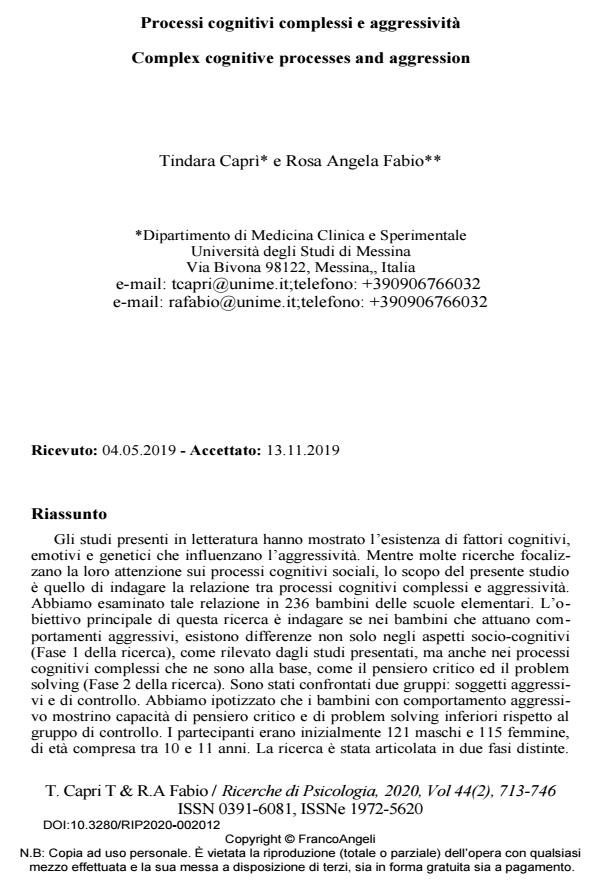Complex cognitive processes and aggression
Journal title RICERCHE DI PSICOLOGIA
Author/s Tindara Caprì, Rosa Angela Fabio
Publishing Year 2020 Issue 2020/2
Language Italian Pages 34 P. 713-746 File size 352 KB
DOI 10.3280/RIP2020-002012
DOI is like a bar code for intellectual property: to have more infomation
click here
Below, you can see the article first page
If you want to buy this article in PDF format, you can do it, following the instructions to buy download credits

FrancoAngeli is member of Publishers International Linking Association, Inc (PILA), a not-for-profit association which run the CrossRef service enabling links to and from online scholarly content.
Literature shows existence of cognitive, emotional and genetic factors that in-fluence aggression. While many researches focuses their attention on social cog-nitive processes, the aim of the present study is to examine relationships between complex cognitive processes and aggressive behaviour. We investigated the rela-tionship between complex cognitive processes and aggressive behavior in 236 primary school children. We hypothesized that subjects with aggressive behav-iour show critical thinking and problem solving skills lower than control group. Participants were initially 121 males and 115 females, aged between 10 and 11 years. This study had two phases. In the first, three self report scales and a peer scale were administered, testing aggressive behavior, self-efficacy and moral dis-engagement; further, two scales were administered to teachers, analysing chil-dren’s aggressive behaviour, inattention and hyperactivity. In the second phase, 31 children were selected and divided into two groups (aggressive vs control). Critical thinking and problem solving skills were tested by five instruments. Results show interesting relationship between aggressive behaviours and dimensions analysed and they reveal significant differences between subjects with aggressive behaviour and control group in the critical thinking only, not in problem solving skills. The results were discussed in light of Social Information Processing theory, according to which social and cognitive skills play a key role in influencing ag-gressive behavior.
Keywords: Complex cognitive processes, aggression, cognition, critical thinking, problem solving.
Tindara Caprì, Rosa Angela Fabio, Processi cognitivi complessi e aggressività in "RICERCHE DI PSICOLOGIA " 2/2020, pp 713-746, DOI: 10.3280/RIP2020-002012